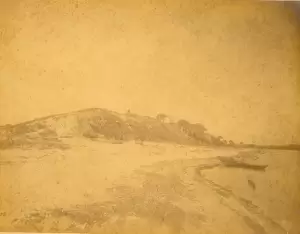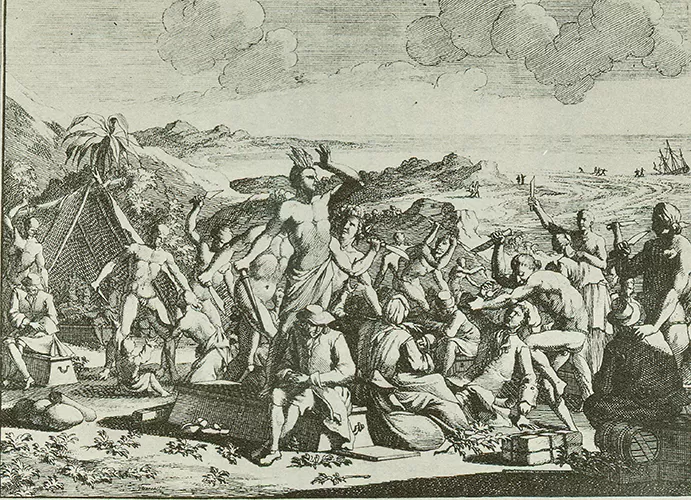Early Tribes: Jeaga and Jobe
A non-agricultural people, the Jeaga hunted game such as deer and raccoon. They also caught food from the sea, such as fish, shellfish, and sharks, and seized large sea turtles when they came to lay eggs on the beach. Artifacts have been found in Indian shell mounds, or kitchen middens, created when the Indians ate shellfish and tossed the shells into piles. They gathered coco palms, sea grapes, palmetto berries, and roots for food as well.
Although there were no deposits of chert (flint) in south Florida, large chert dart points have been found at a Jeaga site, indicating trade with northern Indians. The Jeaga also used wood, bone, and shell to manufacture tools and weapons. Large shells such as conch were made into dippers, cups, and hammers. Parts of the shell were used for the head of an axe or adz (used for chipping and smoothing wood), or for jewelry beads. Shark teeth were mounted on wood or bone handles and used like a knife or drill. Woodworkers made bowls and other objects from pine and cypress.
In the early 1500s the Jeaga world changed forever when the first Spanish galleons appeared on their coastline under Juan Ponce de León, who had sailed with Christopher Columbus on his second voyage to the New World in 1493. The King of Spain appointed Ponce de León governor of San Juan, now Puerto Rico, but in 1512 he was deposed by Columbus’ son on a technicality. The natives on the island spoke of a land to the northeast known as Bimini, where a fountain flowed with waters that would rejuvenate the old. The King granted Ponce de León a charter to search for Bimini and claim it in the name of Spain; the explorer set sail on March 3, 1513. One month later near present-day St. Augustine, Juan Ponce de León claimed La Florida for Spain. While it is doubtful that he was the first Spaniard to see Florida, he was the first authorized to do so.
As he sailed south, Ponce de León passed Jupiter Inlet. Based on the ship’s log later documented by Spain’s official historian on the West Indies, Antonio de Herrera, it is probable that it was there, at Jupiter Inlet, that Ponce de León named the river, Rio de la Cruz (River of the Cross). Herrera recorded from the ship’s log in 1592:
Juan Ponce went ashore here, called by the Indians, who promptly tried to steal his launch, the oars, and arms, [and] with their arrows and armed shafts, the points of sharpened bone, and fish spines, wounded two Spaniards.
There are narratives and descriptions of earlier encounters between the Jeaga and unauthorized Spanish explorers, told from the European point of view, but one must wonder how the area’s earliest inhabitants saw these events.



